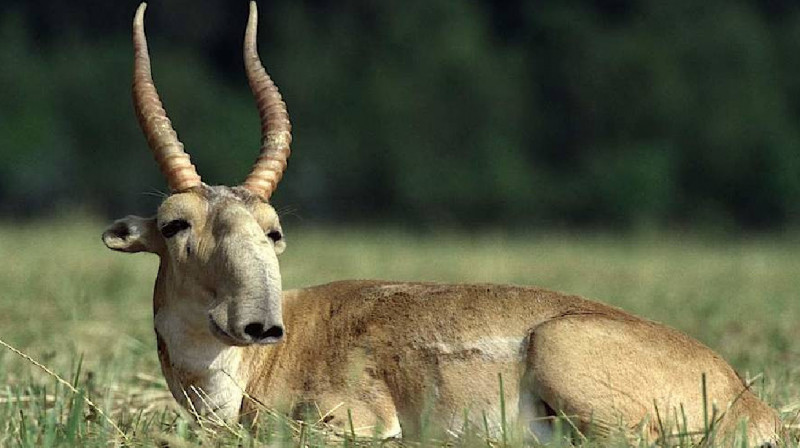ASTANA – Saiga antelopes, as wild grazers, are a vital element in supporting a healthy ecosystem in the steppe of Kazakhstan, said experts from the Association for the Conservation of Biodiversity of Kazakhstan (ACBK) in a special video released by the United Nations Environmental Programme (UNEP). Experts told the UNEP about the saiga’s role in supporting Kazakhstan’s entire ecosystem and measures that have helped to preserve them.

Photo credit: arbat.media.
Ninety-five percent of the world’s saiga population is concentrated in Kazakhstan. As of 2022, there are over 1.3 million saigas in the country.
“When there is a decrease in the number of wild grazers, the steppe vegetation begins to degrade. If their population collapses, we would witness a cascading effect on the whole ecosystem. And we know that the areas where there is no livestock or saiga burn more frequently and become less suitable for many species,” said Alyona Koshkina, the ACBK steppe grassland ecology expert.
The saiga is a small antelope with a distinctive humped nose. When escaping danger, this antelope is capable of developing a speed of up to 80 kilometers per hour. The species is considered unique as it appeared 50,000-70,000 years ago during the era of mammoths and has survived to this day. In the distant past they were widespread in the northern hemisphere. Today the range of the species is limited mainly to the steppes and deserts of Kazakhstan, Russia, and Mongolia.
The saiga is listed as a critically endangered species by the International Union for Conservation of Nature (IUCN). Its population in Kazakhstan has decreased rapidly because of hunting and poaching. From 1992 to 2003, its number decreased from one million to just over 20,000.
Kazakhstan banned saiga hunting in 1999.
After the spread of pasteurellosis in 2015, a zoonotic disease, Kazakhstan lost almost two-thirds of the population of these animals.
Since 2015, Kazakh scientists have been actively trying to revive the population of the saigas. Their conservation efforts have paid off.
“I coordinate research projects and study the effects of grazing both livestock and wild grazers, such as saiga. We sample and analyze data to understand the state of degradation of the [ecological] system and opportunities for restoration. Wild ungulates such as saiga help to maintain such habitats. As we see, the intermediate grazing pressure helps to create open and patchy habitats which are optimal for many typical steppe species,” said Koshkina.
Cooperation with international partners enabled more than five million hectares of rich steppe and semi-desert ecosystems to turn into specially protected natural areas. The saiga can find everything they need to thrive in these areas. Scientists are choosing the locations for natural reserves with the help of modern technologies.
“ACBK started tagging saigas many years ago. At the moment, we have about five satellite tags in the region. The main output of our fieldwork is to collect information about gathering saiga in different seasons. Migration routes enable us to understand the main locations the animals stop at. These are the areas for creating new natural reserves or expanding existing ones,” said ACBK leading specialist Albert Salemgareyev.
Creating a self-sustainable ecosystem is a key goal of the scientists’ efforts.
“We hope that one day we will be able to restore the whole community of wild grazers in the steppes of Kazakhstan that will support a healthy population of predators and scavengers and our ecosystem will have all the components needed to self-sustain itself,” said Koshkina.


